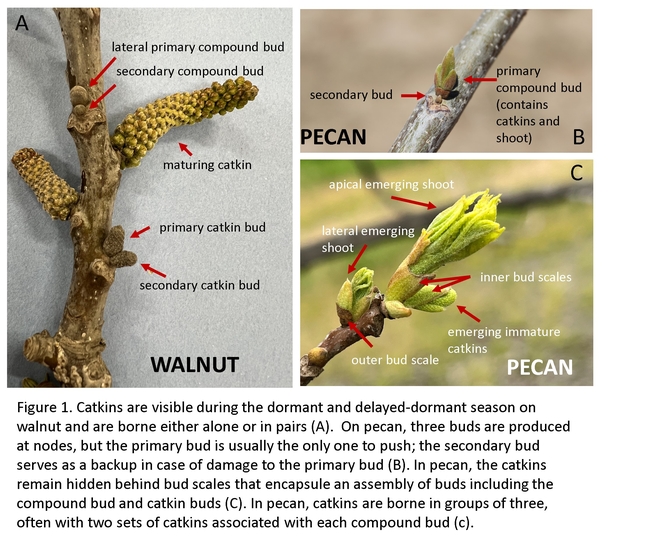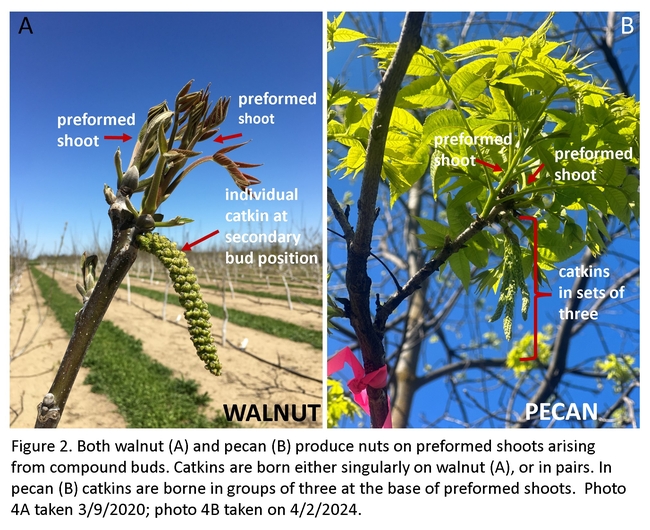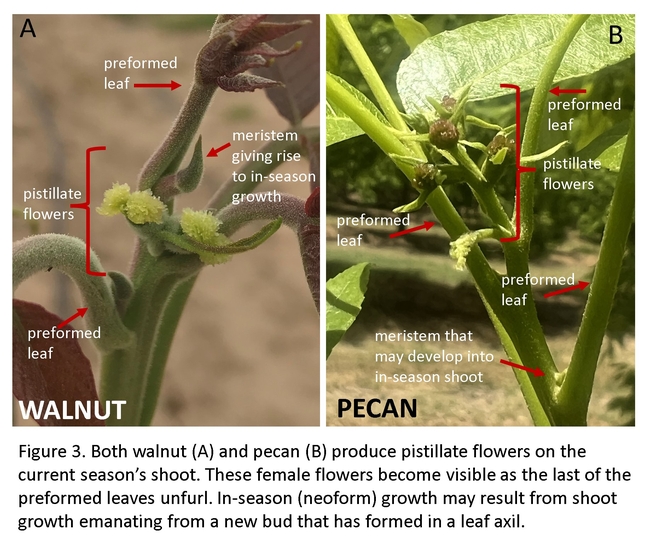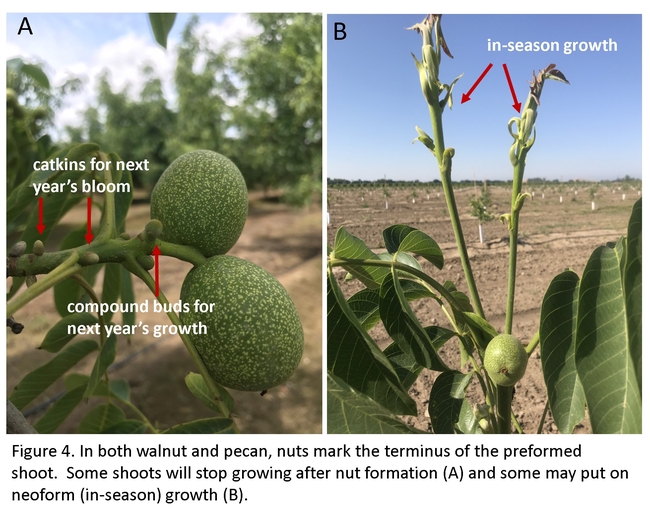Walnuts and pecans represent two of the four major nut crops grown in California. The California walnut industry dwarfs the state's pecan industry in acreage, with over 300,000 acres dedicated to commercial walnut production and approximately 3,000 acres to pecan. The relatedness of the two crops has facilitated an overlap of specialization in the grower community, with many long-time walnut growers also managing the state's pecan acreage.
Walnuts and pecans are both in the same plant family (Juglandaceae); consequently, they have similar reproductive habits. They are both monoecious, meaning that male and female flowers are borne on the same tree. Also, both pecan and walnut produce male flowers called ‘catkins' (Figure 1), and the non-showy female flowers are produced at the terminus of a preformed shoot (Figure 2) that emerges from a compound bud. On walnuts, the catkin buds are visible at nodes, sometimes with two catkins occupying a single node as a primary and secondary bud (Figure 1A). Conversely, the catkin buds on pecan are not readily visible before bud break (Figure 1B). During the delayed dormant phase on pecan, the catkins are hidden behind a scale sheath that covers the catkins and compound shoot bud (Figure 1 B and C). As a result, the catkins only emerge as the entire bud assemblage pushes, generally in late March-early April in California. The compound bud, containing the current season's shoot and female flowers, is assembled with catkins that emerge in groups of three (Figure 1C and 2B). As a result, groups of catkins mature at the base of the current season's shoot (Figure 2B).
The compound buds of walnut and pecan are similar in that the bud contains the preformed shoot and preformed leaves as well as the female (pistillate) flowers. The female flowers are located at the apex of the preformed shoot (Figure 3 A and B). Walnuts and pecans both have variable numbers of pistillate flowers in each compound bud. Walnut flowers are readily visible with the naked eye, whereas pecan flowers are smaller, and observation of the stigmatic surface may be enhanced with the aid of a hand lens. The final nut set of each compound bud varies based on the number of initial pistillate flowers and the success of pollination and fertilization processes.
Both walnut and pecan tend to exhibit apical dominance as evidenced by the stronger, and often earlier, growth of the apical bud. In walnut, two buds (primary and secondary) may be present at each node. Usually, one bud will dominate and grow, while the weaker bud will remain static or die off. Occasionally, both primary and secondary buds grow, resulting in branching at acute angles, often referred to as “forking”. In walnut, nut set can be evaluated by early June and buds for the next year's crop may already be visible in May (Figure 4A). In vigorous orchards, in-season growth may be produced beyond the position of the nuts (Figure 4B). In-season (neoform) growth is less common in pecan. Researchers speculate that the neoform growth observed in walnut may be related to the use of vigorous hybrid rootstocks.
Although pecan and walnut are related species hailing from the same plant family, their growth and reproductive habits do have notable differences. Growers with a lifetime of experience with walnuts may be baffled by the lack of visible catkins on pecan during the dormant season. A bit of patience in the spring, however, reveals the reproductive structures upon bud break. The need for patience in pecan cultivation is also notable at harvest time. In California, the pecan harvest generally commences after the walnut harvest is complete and often continues into the successive year as fall rain events may impede orchard access.
Attached Images:



